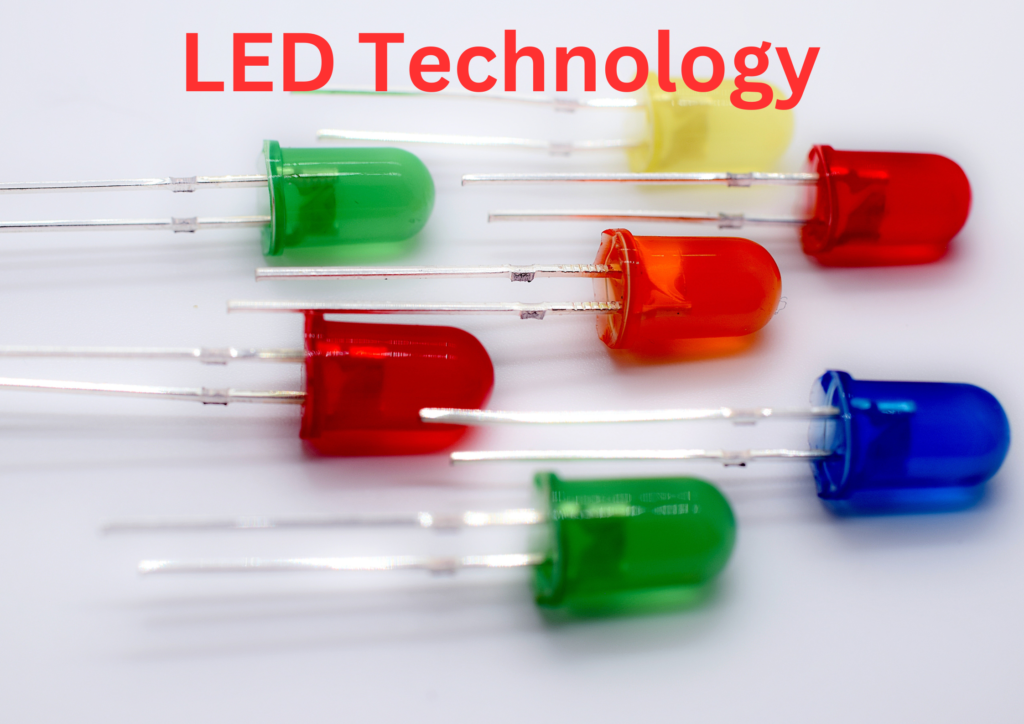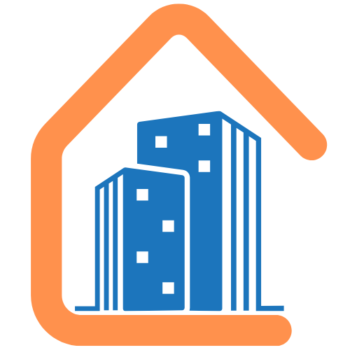In recent years, advanced lighting technologies have revolutionized the way we illuminate our homes, offices, and surroundings. Smart technologies are integrated with lighting systems to make our lives easier and more environmentally friendly. The latest lighting technologies have great potential to save energy and reduce electricity bills.
Nowadays more and more people are using these technologies to enhance aesthetics, and energy efficiency and to lead a healthy life. In this article, we will dive into the world of the latest lighting technology for homes. We will also discuss the advantages, and applications of the latest lighting technology for homes and their potential to transform your home into a versatile and dynamic space.

LED Technology
LED refers to a light-emitting diode. This is a highly energy-efficient semiconductor device. When a voltage is applied to the LED, an electric current flows through the semiconducting material i.e. the diode and it emits energy in the form of light.
LED has the potential to greatly enhance the future of lighting technology. Nowadays the majority of lighting installations are based on LED technology. As this lighting technology is highly energy efficient, cost-effective, durable, and environmentally friendly, this is a popular option to build a smart home for everyone. The utilization of LED bulbs has a large impact on the environment and this leads to a better future for us.
The LED can be used in various ways for lighting a home. The applications of LED are listed below.
Applications:
- Ceiling Lights
- Flat Panel lights
- Outdoor lights
- Security lights
- Garage lights
- Under cabinet lights
- Dimmable light bulbs
- Garden lights
- Mirror lights
- Home theatre lighting
- Smart lighting
Advantages of the utilization of LED in homes:
- Reduce electricity bills
- Aesthetically pleasing lights give a stylish look to your home
- Highly durable and easy maintenance
- LED lights emit less harmful radiation
- Dimming capability can create a good ambiance and conserve energy
- Low voltage operation can protect people from electric shock during flooding
Smart Lighting System

A smart lighting system always brings comfort, convenience, and a beautiful ambiance to the home and the people staying there. We can say it adds new life to the lighting system. It consumes less electricity, emits less heat, and saves more energy than other lighting systems. It also helps in reducing electric bills.
A lighting system is an advanced technology that can be controlled remotely and also automatically by using smartphones, apps, and remotes is known as a smart lighting system. The smart bulbs and lights have chips inside them, that are used to connect with other devices wirelessly to control them automatically. These types of lighting systems are used in homes, outdoors, offices, industries, and so much more. Smart lighting systems are not only making our lives easier but also making the world a better place to live. The benefits of using a smart lighting system at your home are listed below.
Advantages:
- Controllable: You can easily control all of your lights including indoor and outdoor with a single tap of a keypad, or with a remote or by a single voice command. This advanced technology is not only making your life easier but also saving energy from waste.
- Adjustable: In a smart lighting system the bulbs are set in such a way that they can increase or decrease the brightness with the sunlight. You can also adjust the natural color of the lights.
- Saves energy: A smart lighting system is highly energy-efficient. It consumes less electricity and saves energy.
- Saves money: These lighting systems are highly durable, so you don’t have to spend money on replacement and maintenance. As it consumes less electricity to produce light, it can help reduce electric bills to a large extent.
- Lead a healthy life: These lighting systems are highly controllable. You can easily control the brightness according to your mood. Thus, the soothing lights help release stress and keep you mentally happy.
| Govee RGBIC Floor Lamp | BUY NOW |
| Northern Galaxy Light Aurora Projector | BUY NOW |
| Rossetta Galaxy Projector | BUY NOW |
| Under Cabinet Lights | BUY NOW |
| Philips Hue Smart Light Starter Kit | BUY NOW |
| Lutron Caseta Smart Lighting Kit | BUY NOW |
Tunable White Lighting
The ability to control a light source’s color temperature output is known as tunable white lighting technology. This technology is defined by several other terms such as variable white, dim to white, or custom temperature lighting. By using this technology, you can adjust the appearance of colors according to your needs and preferences. The light source’s color can be changed from warm to cool to neutral by using tunable white lighting technology.
In this technology LEDs of different color temperatures are combined in a single bulb. Basically, tunable white lighting fixtures have both cool white and warm white LED chips. By using an external control system or remote system, you can tune the color temperature of LEDs inside the bulb, to get the desired color within a specified range. This technology is generally used in offices, education, retail, hospitality, etc.
Advantages of tunable white lighting:
- Improves health: Tunable white lighting technology can be used to improve health and well-being.
- Increase productivity: This technology is generally used in offices, and healthcare facilities to create a good ambiance to enhance the mood and productivity of people.
- Flexible: This lighting technology is incredibly flexible to create or design a space according to different moods and activities. You can customize the lighting according to your preferences.
- Saves energy: Using this technology you can easily control the light output, reduce the brightness level, and save energy. This lighting technology consumes very less electricity and is highly energy-efficient.
Applications of tunable white lighting:
- Healthcare facilities
- Residential
- Offices
- Educational field
- Hospitality
- Retail
Human Centric Lighting

A lighting technology that enhances human health and well-being is known as Human Centric Lighting or HCL. This technology is used to improve the mood, comfort, and productivity in the people. HCL technology uses advanced tunable white lighting technology to mimic the natural world’s light cycle and supports your circadian rhythm. This lighting technology uses tunable light-emitting diode fixtures to adjust the color temperature in creating the perfect healthy ambiance for people.
HCL technology is a great substitute for daylight.
Advantages of human-centric lighting
- This lighting technology improves the well being, satisfaction and productivity in people.
- This technology helps you following better sleeping habits and is excellent for people who suffer from sleep-related diseases.
- It boosts mood and makes you feel happier.
- This technology helps in reducing stress and tension.
Applications:
- Healthcare facilities
- Homes
- Commercial fields
- Educational fields
Energy Efficient Lighting
The best way to make your home more eco-friendly is implementation of energy-efficient light bulbs. A 100% energy-efficient light bulb can convert all its consumed electricity to light. LED bulbs are considered the most energy-efficient light bulbs with 85% energy efficiency. They feature a longer life span, and high brightness, and can produce around 40-80 lumens per watt. Whereas, the incandescent light bulbs are 10% energy efficient.
In the long run energy-efficient light bulbs can save a lot of money by consuming less electricity. LED bulbs combined with some advanced sensor technology and adaptive control systems can produce smart lighting systems. As you can control these types of lighting automatically and remotely, you can also reduce the waste of energy. The dimming capability and controllability can also save energy in a great way.
Advantages of Energy-Efficient Light Bulbs:
- In the long run an energy-efficient light bulb can save a large amount of money.
- These light bulbs need lower maintenance and feature a long life.
- Energy-efficient light bulbs also give comfort, improve productivity, and can create a great ambiance.
- They look fashionable and can be used both indoors and outdoors to give a stylish look.
- You can easily control the brightness of the smart lights according to your needs and preferences.
Applications:
- Indoors
- Outdoors
- Offices
- Schools/Colleges
- Hospitals
Integrated Lighting
Integrated lighting has an array of LED lightbulbs that connect directly with low or line-volt electrical systems. The electric current is sent directly to the LED chips. This lighting system gives fuller or pure light output but they can not be removed easily. The main difference between LED and integrated lighting is that LED is a single light bulb and the other is a diode array.
Advantages of Integrated Lighting:
- The integrated lighting system is connected directly to the electrical system, thus it saves more energy.
- The integrated LED bulbs are smaller in size and thus they create more creative spaces.
- They allow maximum control over light output
- They feature a longer life span.
- The integrated lighting systems emit less heat and are environmentally friendly.
Applications of Integrated Lighting:
- Chandeliers
- pendant lights
- wall sconces
- flush mount
- semi-flush mount ceiling lights
FAQS
- What is the newest most efficient lighting technology?
LED technology, smart lighting systems, tunable white lighting technology, integrated lighting systems, etc are the newest and most efficient lighting technologies. People are implementing these technologies more and more as they are highly energy efficient, fashionable, durable, need no maintenance, and also eco-friendly.
2. Which lighting is best for the home?
LED lighting technology is best for the home. This technology consumes less energy and reduces electricity bills. This lighting technology also gives a fashionable look and a beautiful and healthy ambiance to your home.
Also Read
- How To Set Up Smart Lighting at Home?
- How to control lights away from home? A Complete Guide 2024
- Easy Steps to Fix and Replace LED Light Bulbs 2024
- 7 Latest Trends in LED lighting (2024)
- How Do Portable Air Conditioners Work Without a Window? 2024
- Portable AC Vs Window AC: Which One Is Right for You? 7 Major Differences
- Portable AC Vs Central AC: Which One Is Right for You? 2024
- Is Central AC Good for Home?
- Why Are HVAC Systems So Expensive? 10 Most Common Reasons
- What Size of HVAC System Do I Need? 2024
- What Is the Most Efficient HVAC System and Why? 2024
- Types of HVAC Systems in Apartments 2024
- HVAC System Working Principle
- HVAC System Vs Air Conditioning System: 6 Major Differences
- What Are the Most Common Types of HVAC Systems? 2024
- 6 Types of HVAC Systems for Homes 2024
- How Does a Refrigerator Work? A Step-by-Step Guide 2024
- 8 Reasons Why Refrigerator Not Cooling and Solutions
- Side By Side Vs French Door Refrigerator 2024
- Counter Depth Refrigerator vs. Standard Refrigerator: Which One Is Better?
- Where Should I Place My Air Purifier? 2024
- How Do You Know If You Need an Air Purifier? 2024
- HEPA Air Purifier: Definition, Types, Uses, Efficiency, Working Principle
- Whole House Air Purifier: Types, Pros, Cons, Working Principle 2024
- Air Purifier Advantages and Disadvantages


7 thoughts on “6 Latest Lighting Technology for Homes”